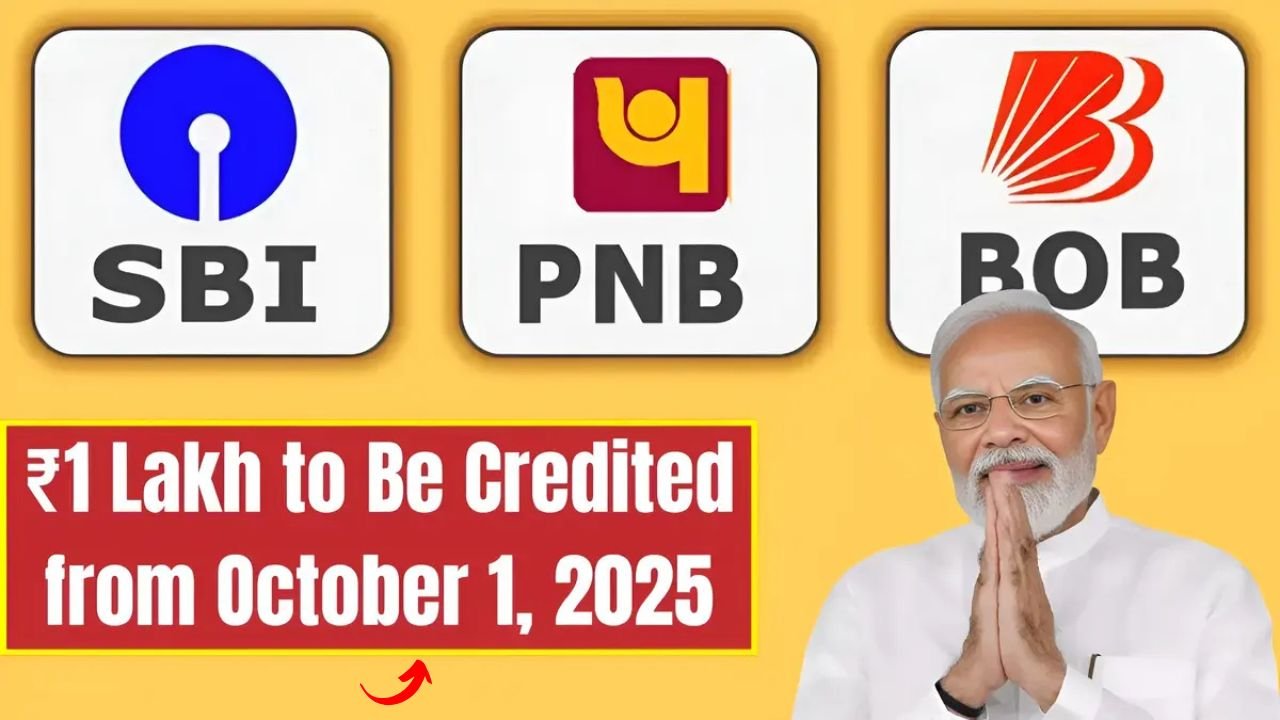Beginning October 1, 2025, account holders of three of India’s leading public sector banks—State Bank of India (SBI), Punjab National Bank (PNB), and Bank of Baroda (BOB)—will be able to access a credit facility of up to ₹1 lakh.
This initiative is expected to provide substantial relief and greater financial flexibility to millions of customers nationwide. In this article, we’ll look into the specifics of the scheme, its benefits for customers, and its potential influence on India’s banking sector.
What Is the ₹1 Lakh Credit Facility?
The ₹1 lakh credit facility is basically a pre-approved borrowing limit provided to eligible customers of SBI, PNB, and BOB. It is intended to support account holders in meeting their short-term financial requirements without the hassle of a lengthy loan approval process. The approved amount is directly available in their bank accounts, offering a quick and convenient source of funds for urgent needs or planned expenses.
The purpose of this facility is to give customers easy access to liquidity, promote responsible borrowing habits, and reduce reliance on high-cost options such as personal loans or credit cards. Compared to conventional loans, this facility has simpler conditions and quicker disbursal, making it a practical and appealing choice for many account holders.
Who Is Eligible for This Credit Facility?
Eligibility for the ₹1 lakh credit facility will depend on multiple conditions set individually by each bank. Though the exact requirements may differ slightly among SBI, PNB, and BOB, the common expectations generally include maintaining a positive account record, consistent transactions, and a minimum duration of holding a savings or salary account.
Before granting the credit limit, banks will review the customer’s account activity, income patterns, and credit score. This process ensures that the facility is extended only to customers with a proven record of responsible banking, reducing the chances of default.
It should be noted that this benefit is not automatically available to every customer. Those who qualify will be informed by their respective banks—either through SMS or email—about their eligible credit limit and the process to avail of it.
How Will Customers Access the Credit?
Once customers are notified of their approved credit limit of ₹1 lakh, accessing the funds becomes simple and hassle-free. The sanctioned amount is directly linked to their savings or current account. They can utilize the money through internet banking, mobile apps, ATM cash withdrawals, or even by issuing cheques, similar to how they use their normal account balance.
The repayment structure is kept flexible. This credit is generally considered a short-term advance that must be cleared within a defined period, typically between 30 and 90 days. The interest charged on this facility is competitive and usually lower compared to personal loans or credit cards, making it an economical borrowing option.
This service proves highly beneficial for covering short-term cash flow gaps or handling unforeseen expenses without going through lengthy loan application procedures. However, customers should make sure to repay on time to avoid late fees or negative effects on their credit profile.
Why Are Banks Offering This Facility Now?
The launch of this credit facility by SBI, PNB, and BOB comes at a time when digital banking and financial inclusion are witnessing rapid growth in India. By extending pre-approved credit to a wide customer base, these banks seek to strengthen customer relationships and build long-term loyalty.
In addition, the initiative enables banks to address the rising need for fast and convenient credit, particularly among salaried employees and small business owners who frequently encounter short-term liquidity challenges. It also helps reduce reliance on informal lending sources, which are often costly and unregulated.
From a strategic angle, this move is expected to expand the banks’ retail loan portfolios while effectively managing risk through advanced data analytics and customer behavior insights. It also supports the government’s broader goal of providing citizens with easier access to formal credit.
The facility proves especially beneficial for bridging cash flow gaps or handling sudden expenses without undergoing the lengthy loan application process. Nonetheless, customers must ensure timely repayments to avoid penalties or negative effects on their credit history.
Benefits For Customers
Customers can quickly access up to ₹1 lakh without lengthy paperwork or delays, making it useful in emergencies like medical needs, urgent repairs, or business expenses. Since it’s linked to existing accounts, no extra documents or repeated credit checks are needed. The process is automated, transparent, and interest rates are expected to be lower than other unsecured loans. This helps customers manage short-term needs affordably while also building better credit discipline.
Challenges To Consider
Though convenient, it is still a loan. Missed or delayed payments can attract penalties and hurt credit scores. Some may treat it as free money, leading to financial stress. Not everyone will be eligible, so banks must clearly explain terms. Customers need to borrow responsibly and plan repayments.
Impact on Banking Sector
With SBI, PNB, and BOB launching this facility from October 1, 2025, other banks may follow. This move can boost digital banking, promote financial inclusion, and reduce reliance on informal lending. Banks will also rely on AI and data analytics to manage risks effectively.
Conclusion
The ₹1 lakh pre-approved credit is a step toward easier, faster, and more inclusive banking in India. For customers, it offers flexibility and convenience—if used wisely. For banks, it strengthens customer trust and competitiveness.





